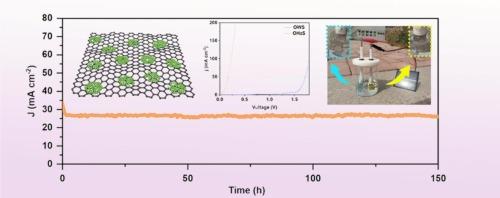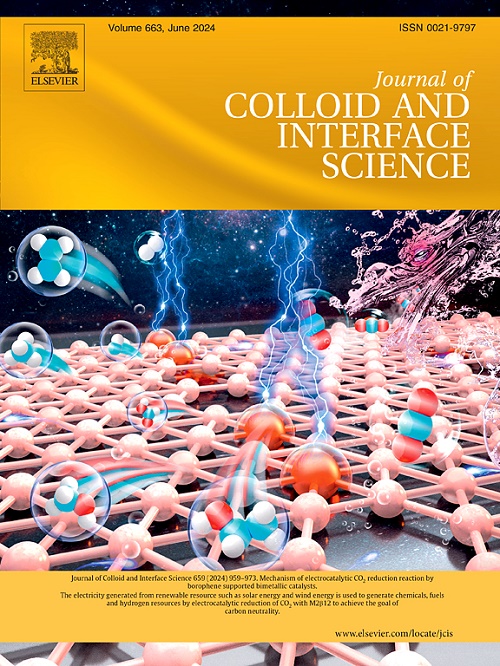具有丰富空位的量子尺寸 CoP 纳米点:通过界面调制增强肼氧化、肼辅助水分离和锌肼电池性能。
IF 9.7
1区 化学
Q1 CHEMISTRY, PHYSICAL
引用次数: 0
摘要
减小催化剂尺寸、调整其电子结构和界面特性是提高催化性能的关键。本文采用化学气相沉积(CVD)方法合成了一系列量子尺寸的 Co 基纳米点复合材料,包括 Co3O4/C、CoS2/C、CoN/C 和 CoP/C。通过实验测量和理论计算,CoP/C 在 N2H4 的电化学氧化(HzOR)和氢进化反应(HER)中表现出比其他 Co 基化合物更强的电化学响应。通过在 CoP/C 表面引入 Co 空位(标记为 Co1-xP/C),可以进一步提高 CoP/C 的催化活性。结果表明,Co1-xP/C 不仅在 0.67 μM 的超低 N2H4 浓度下表现出显著的电化学响应,展示了其在超灵敏 N2H4 检测方面的潜力,而且还实现了 HzOR 取代氧进化反应(OER)半反应,从而将 10.0 mA cm-2 时的过电位降至 2.0 mV。最后,制备出了一种 Zn-肼(Zn-Hz)电池,作为一种前景广阔的能量转换装置,显示了 Co1-xP/C 的非凡实用价值。本文章由计算机程序翻译,如有差异,请以英文原文为准。

Quantum-sized CoP nanodots with rich vacancies: Enhanced hydrazine oxidation, hydrazine-assisted water splitting, and Zn-hydrazine battery performance through interface modulation
Reducing the size of catalysts and tuning their electronic structure and interfacial properties are key to enhancing catalytic performance. Herein, a series of quantum-sized Co-based nanodot composites, including Co3O4/C, CoS2/C, CoN/C, and CoP/C, were synthesized using chemical vapor deposition (CVD) methods. By means of experimental measurement and theoretical calculation, CoP/C exhibited more robust electrochemical response than other Co-based compounds in electrochemical oxidation of N2H4 (HzOR) and hydrogen evolution reaction (HER). The catalytic activities of CoP/C can be further enhanced by introducing Co vacancies on the surface of CoP/C (labeled as Co1−xP/C). The results demonstrated that Co1−xP/C not only exhibited notable electrochemical responses at an ultra-low N2H4 concentration of 0.67 μM, showcasing its potential for ultra-sensitive N2H4 detection but also realized HzOR instead of the oxygen evolution reaction (OER) half-reaction, thereby lowering the overpotential to 2.0 mV at 10.0 mA cm−2. Finally, a Zn-hydrazine (Zn-Hz) battery was fabricated as a promising energy conversion device, showing the exceptional practical value of Co1−xP/C.
求助全文
通过发布文献求助,成功后即可免费获取论文全文。
去求助
来源期刊
CiteScore
16.10
自引率
7.10%
发文量
2568
审稿时长
2 months
期刊介绍:
The Journal of Colloid and Interface Science publishes original research findings on the fundamental principles of colloid and interface science, as well as innovative applications in various fields. The criteria for publication include impact, quality, novelty, and originality.
Emphasis:
The journal emphasizes fundamental scientific innovation within the following categories:
A.Colloidal Materials and Nanomaterials
B.Soft Colloidal and Self-Assembly Systems
C.Adsorption, Catalysis, and Electrochemistry
D.Interfacial Processes, Capillarity, and Wetting
E.Biomaterials and Nanomedicine
F.Energy Conversion and Storage, and Environmental Technologies

 求助内容:
求助内容: 应助结果提醒方式:
应助结果提醒方式:


